what is filter?
what is filter?
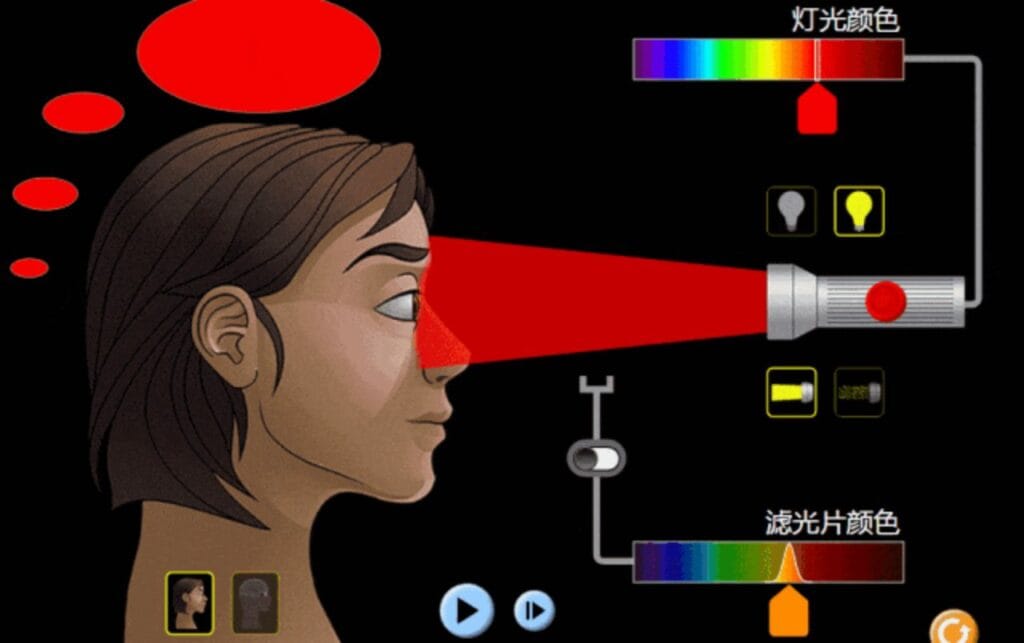
A filter is an optical element used to select light of a specific wavelength. Its working principle is mainly based on the interference, diffraction, absorption and reflection of light. It can absorb excess light by adding colored glass or dyes, or reflect excess light by adding interference coatings ( click the link to refer to the previous article “Principles and Applications of Filters” ). Most wavelength photoelectric filters use the principle of interference coating, and its coating design and materials are specially selected to achieve the ideal transmission curve and performance. Hard-coated optical filters have a single substrate, dense coating and excellent optical performance. They can meet the adhesion, wear, temperature and humidity requirements specified in MIL-C-48497A , and are ideal for precision applications and OEM integration.

IBS coating machine plays an important role in the production of optical filters. It uses ion beam sputtering technology to provide high-quality coatings for filters, thereby significantly improving the optical performance and stability of the filters. IBS ( Ion Beam Sputtering ), ion beam sputtering technology, is a method that uses high-energy ion beams to bombard the target surface, so that target atoms or molecules are sputtered out and deposited on the substrate to form a thin film. In the filter production process, IBS coating machines are mainly used to deposit optical films on filter substrates. By precisely controlling the energy, angle and target material of the ion beam, the production of optical filters with different wavelengths and bandwidths can be achieved.
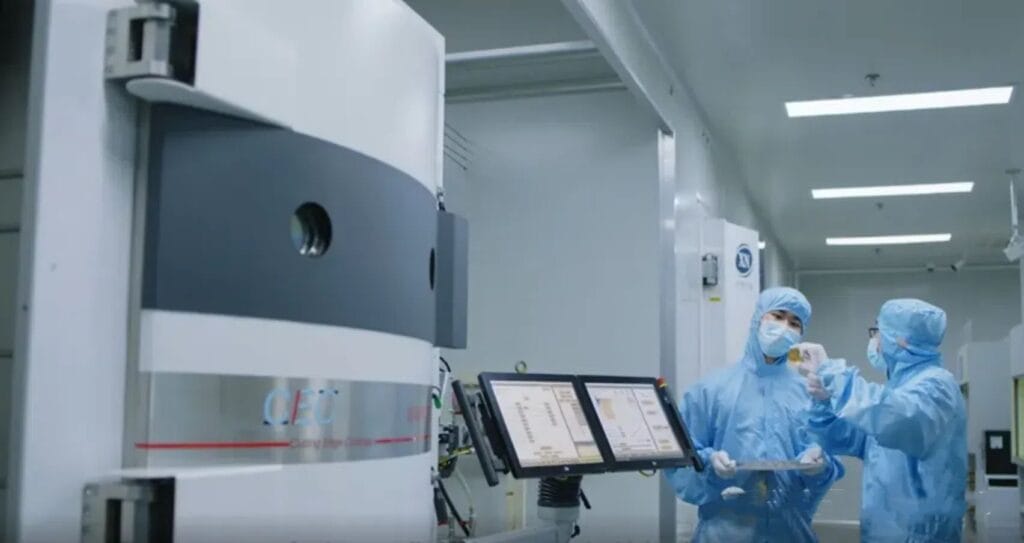
In addition, IBS coating machines can also achieve multi-layer coating to further improve the optical performance of the filter. This technology can accurately control the composition, thickness and uniformity of the film, and is suitable for manufacturing high-precision, high-performance optical films. Wavelength photoelectric filters have the characteristics of dense film layer, hard film layer, long-term durability, small wavelength drift, wipeable, high and low temperature resistance, corrosion resistance, double-sided coating, ensuring that the product’s parameter performance is equivalent to that of imported products, and can replace imported products. The specific specifications or parameters of the filter determine which application is more suitable. The following are the main indicators of the filter’s specific application ( click the link to refer to the previous article “Filter Selection and General Indicators Introduction” ).

Optical density ( OD )
Optical density describes the amount of energy that is blocked or rejected by a filter. A high optical density value indicates low transmittance, while a low optical density indicates high transmittance. Optical densities of 6.0 or greater are used for extreme blocking requirements, such as Raman spectroscopy or fluorescence microscopy. Optical densities of 3.0-4.0 are ideal for laser separation and purification, machine vision, and chemical inspection HYPERLINK “https://mp.weixin.qq.com/s?__biz=Mzg4MzcyMDkyMA==&mid=2247493151&idx=1&sn=75a125dd56243cec5e3aba54365775ca&scene=21” \l “wechat_redirect” \t “https://mp.weixin.qq.com/_blank” , while optical densities of 2.0 or less are ideal for color sorting and separation of spectral sequences.
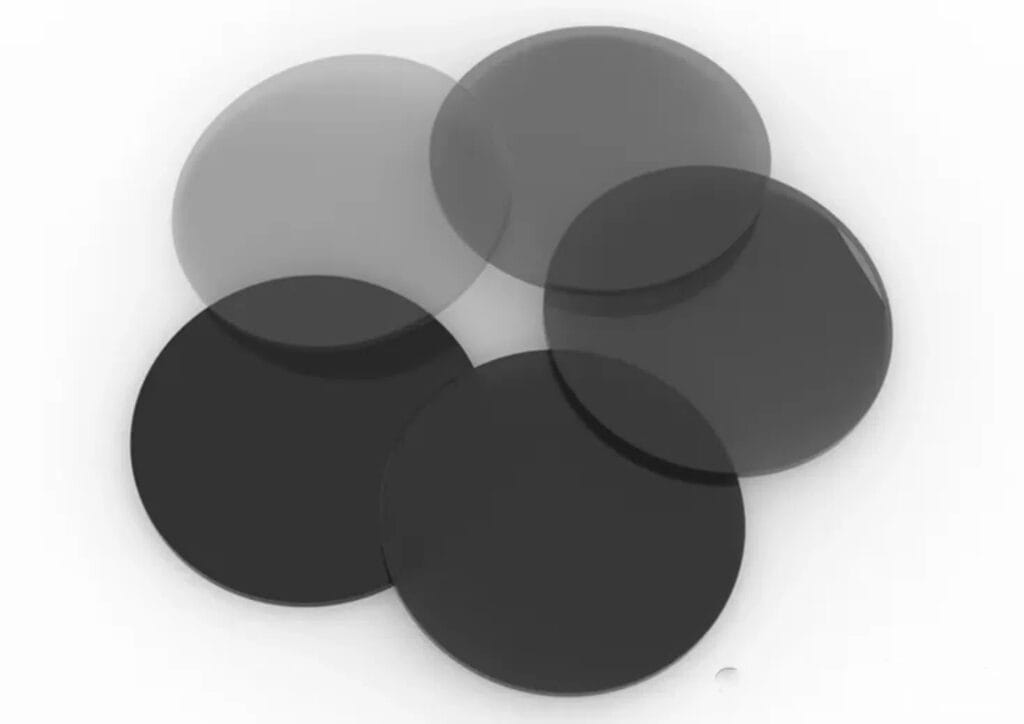
Center wavelength ( CWL )
The center wavelength used to define a bandpass filter describes the midpoint of the spectral bandwidth through which the filter transmits. Traditionally coated optical filters tend to reach maximum transmission near the center wavelength, while hard-coated optical filters tend to have a fairly flat transmission profile over the spectral bandwidth.
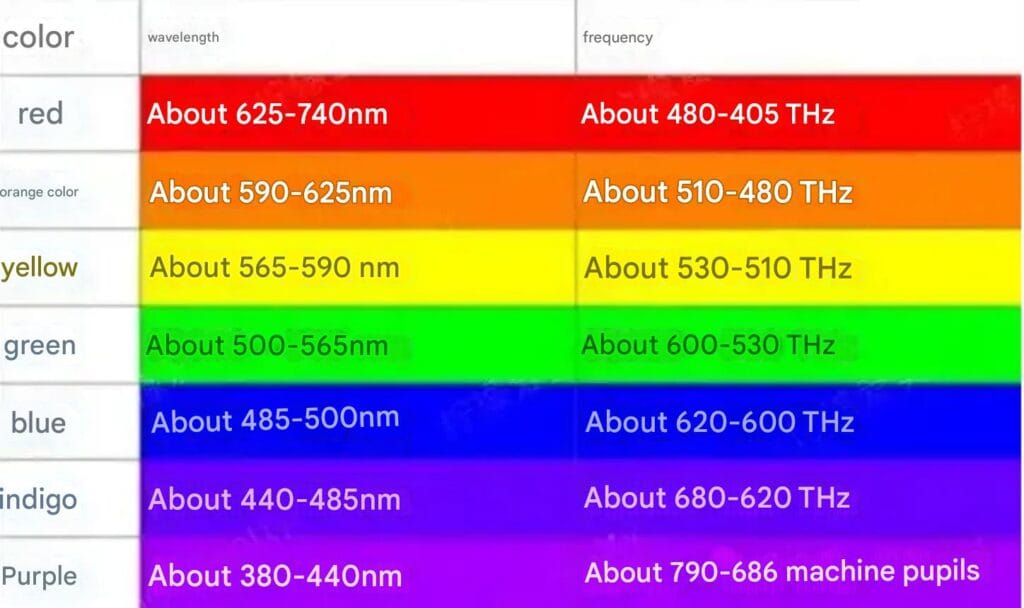
Full Width at Half Maximum ( FWHM )
FWHM describes the peak width of a bandpass filter’s transmission spectrum at half its peak height. For example, if the filter’s maximum transmission is 90% , then the width of the spectrum where the filter reaches 45% transmission will define the upper and lower limits of the FWHM . FWHMs of 10 nanometers or less are considered narrowband and are often used in laser cleanup and chemical detection. FWHMs of 25-50 nanometers are often used in machine vision applications. FHWMs over 50 nanometers are considered broadband and are often used in fluorescence microscopy applications
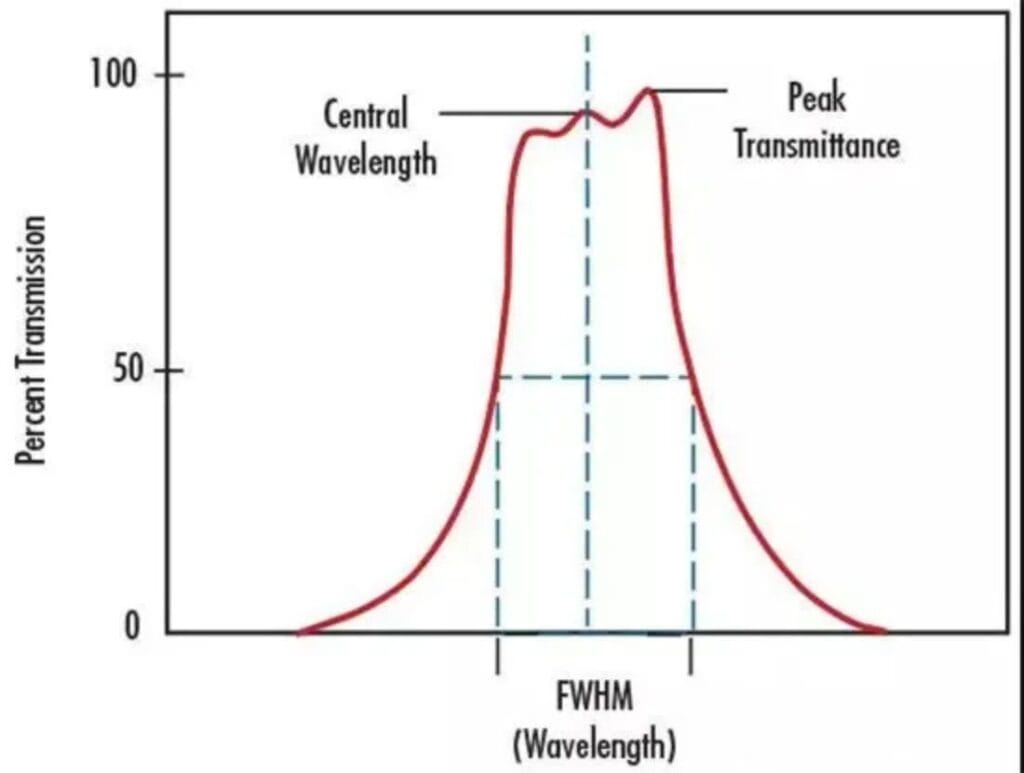
Shortwave Bandpass Filter
It is a filter that allows a short-wavelength band of light to pass through while blocking other bands of light. This filter uses the thin film interference effect to make light of a specific wavelength constructively or destructively interfere inside the filter, thereby achieving light transmission or reflection.
In laser systems, short-wave bandpass filters can be used to selectively filter out non-target wavelengths of light, improve the monochromaticity and stability of laser output, and ensure the normal operation of the laser within a specific wavelength range. In optical instruments such as fluorescence microscopes and confocal microscopes, short-wave bandpass filters can effectively excite and observe specific fluorescent markers in biological tissues. Short-wavelength light has strong penetration and fluorescence excitation capabilities for biological tissues, and therefore plays an important role in biomedical research.
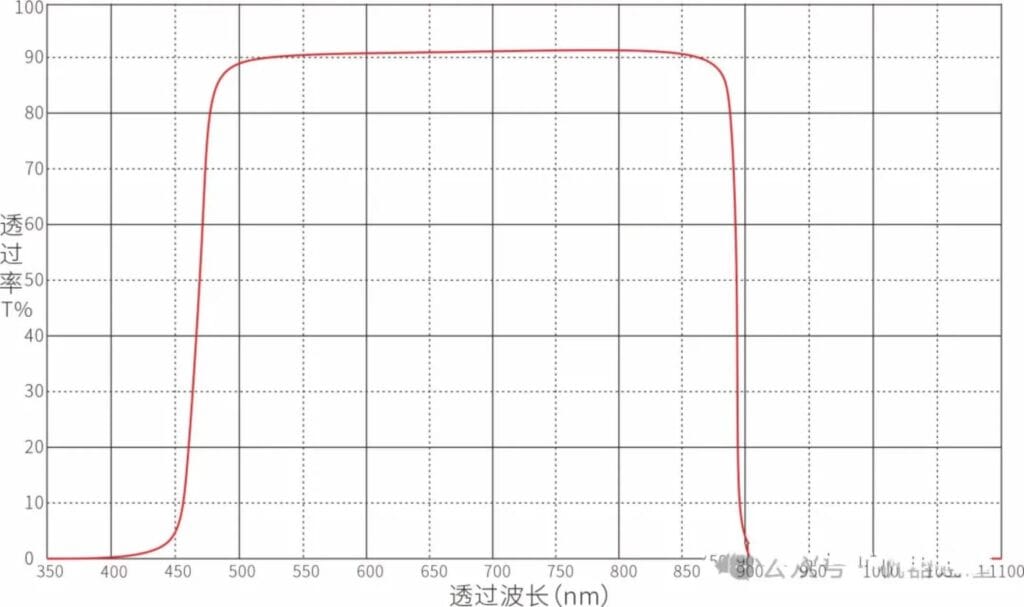
Notch Filters
It is also commonly called a band-stop or band-suppression filter, or many domestic manufacturers call it a negative filter. It can transmit most wavelengths with almost no intensity loss or low intensity loss, and attenuate light in a specific wavelength range (stop band) to a very low level.
The deep cutoff and broadband transmission characteristics of notch filters make them suitable for laser analysis applications that maximize system performance by cutting off specific wavelengths. Instruments, fluorescence microscopes, instrument fluorescence test equipment, Raman laser instruments, medical analysis instruments, biochemical analysis instruments, scientific research experiments, laser-based Raman, fluorescence and medical system applications, laser protection, Raman spectrometers, laser fluorescence analyzers and biomedical laser systems and astronomy filters, etc.
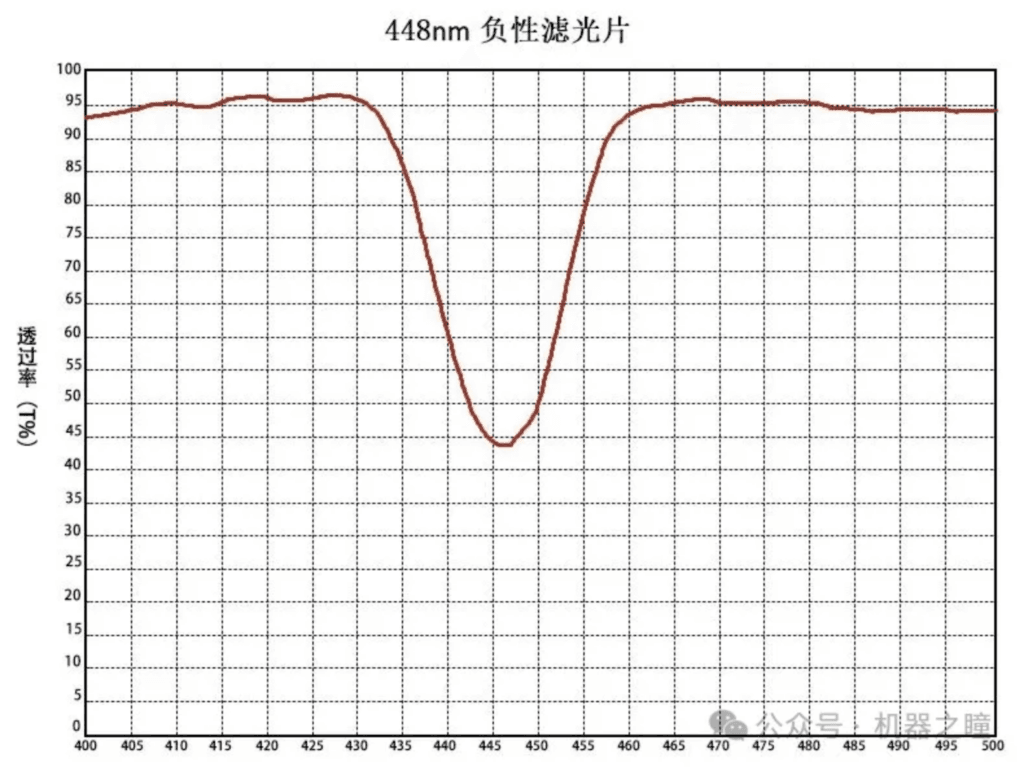
Common customization parameters
Bandwidth, 10 , 15 , 20 , 2 , 30 , 40 , > 50nm .
Cut-off depth, OD2 , OD3 , OD4 , OD5 , OD6 .
Band range: 200-1200 , 200-2000 , 300-1000 , 400-800 , 400-1200nm , etc.
Shenzhen HSTD Import and Trade Co., Ltd.,
We customize all kinds of AHD /USB /MIPI /DVP /IPC camera module from 1 MP to 48 MP as per your request
Your most trusted partner for camera module solutions
